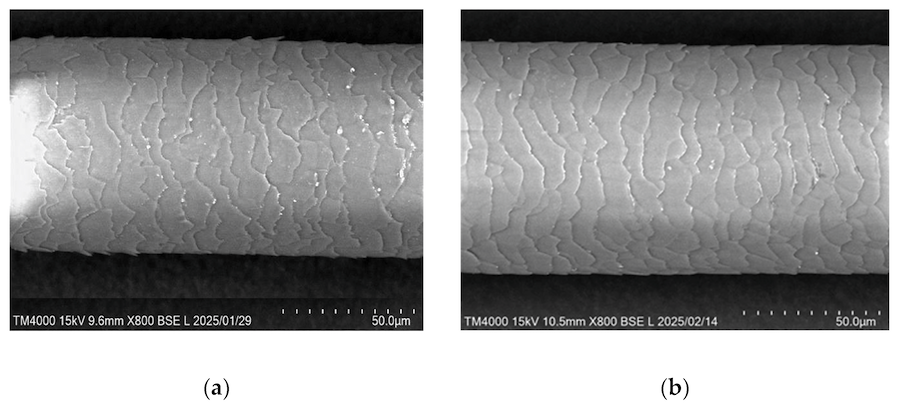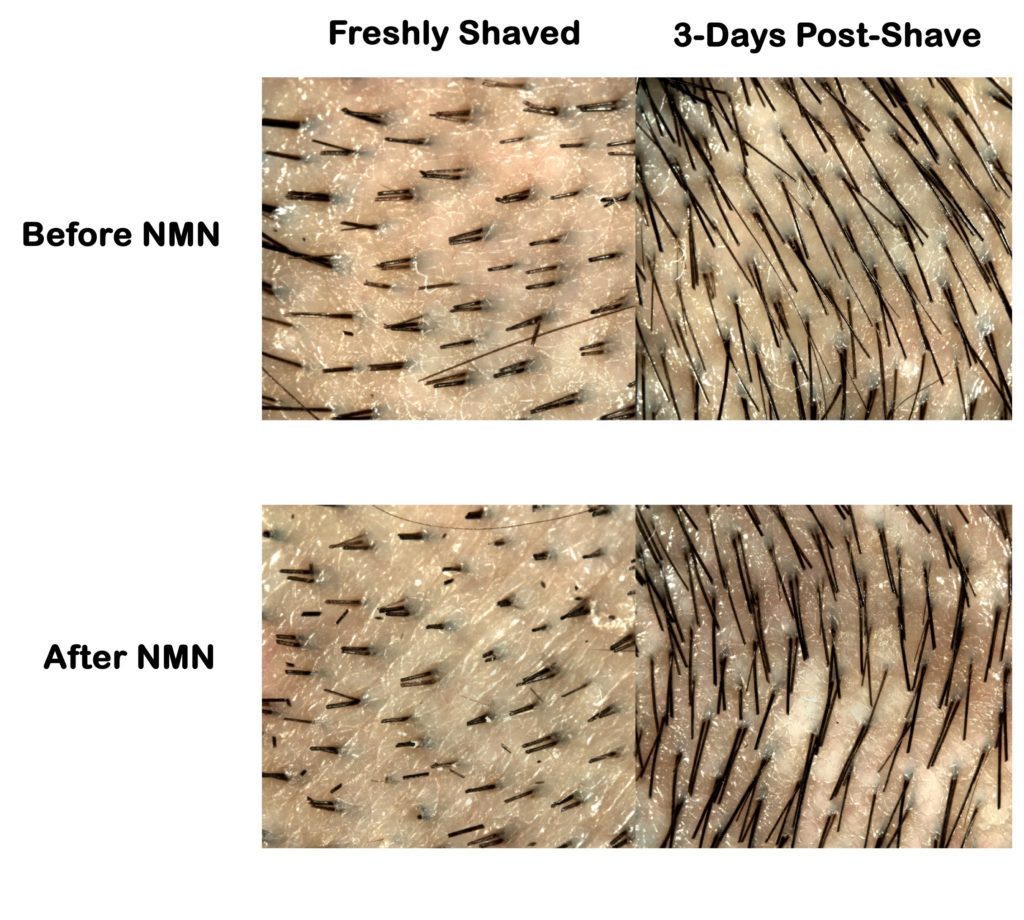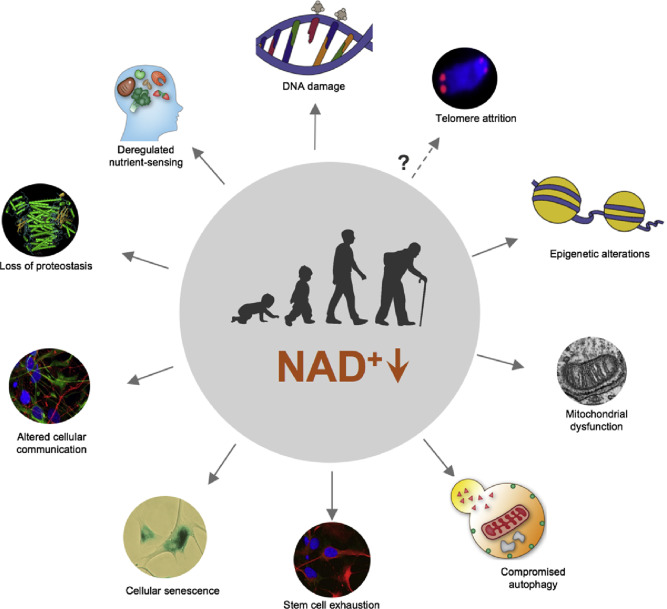Anti-Aging Supplement NMN Reverses Hair Thinning in Middle-Aged Adults
Supplementing with NMN (nicotinamide mononucleotide) reverses hair thinning in middle-aged women.
Highlights
- NMN supplementation reverses hair thinning.
- NMN increases hair elongation but decreases hair count.
- NMN improves subjective perception of hair quality.
Aging, stress, and poor nutrition can lead to hair thinning, which can lower perceived quality of life for many individuals. Considering the potentially broad anti-aging benefits of NAD+ (nicotinamide adenine dinucleotide) precursors like NMN, researchers from the life sciences division of the Mitsubishi Corporation studied its effects on hair. Interestingly, a key finding was that NMN prevented hair thinning. However, there was a caveat.
NMN Reverses Hair Thinning
The Mitsubishi researchers assessed the hair condition of fifteen women before and after taking NMN for 12 weeks. The NMN (made by Mitsubishi Corporation Life Sciences Limited) was given in tablet form at a dose of 500 mg per day, which is half the dose found to improve the skin of participants from a previous clinical trial. The results showed that NMN increased hair diameter from about 75 micrometers (µm) to 79 µm. While, for this experiment, two of the participants were excluded for being extreme statistical outliers, these findings suggest that NMN can reverse hair thinning in middle-aged women.

NMN’s Effects on Hair after Being Shaved
Before NMN supplementation, a small area (~ 1 cm2) on the back of participants’ heads was shaved with clippers. Three days after this initial shaving, it was found that around 56 hairs (per cm2) were elongated. In comparison, after NMN supplementation, about 88 hairs were elongated three days after shaving. However, the number of actively growing hairs diminished from approximately 191 hairs to 168 hairs. These findings demonstrate that NMN supplementation can increase hair length but can also trigger hair loss.
“Although we cannot deny the possibility that the decrease in hair count is due to taking NMN, we speculate that it is due to seasonal hair loss,” said the authors.

NMN Improves Metabolism and Subjective Hair Quality
In addition to objectively measuring hair density, hair elongation, and hair diameter, the researchers administered a hair assessment questionnaire to the participants. According to the participants’ self-evaluation, NMN reduced fatigue, gray hair perception, hair parting concerns, hair loss upon waking, and hair loss upon shampooing. NMN also increased hair elasticity, combing ease, gloss, and volume, according to the participants. To this, the authors said,
“The association between reduced fatigue and improvements in hair condition may be attributed to NMN’s role in enhancing mitochondrial function and basal metabolic activity through the elevation in NAD+ levels, thereby potentially reducing overall physical fatigue. A decrease in fatigue may lead to a reduction in subjective stress and tension, contributing to a more positive perception of hair conditions such as reduced concerns about hair loss and gray hair.”
Regarding hair-related metabolic alterations induced by NMN, the authors concluded,
“After NMN supplementation, significant increases were observed in tryptophan and glutamine, both of which are key precursors in the NAD+ synthesis pathway. In addition, NMN intake led to elevated levels of metabolites related to energy metabolism, including isovalerylcarnitine, creatine, creatinine, leucine, and isoleucine, together with a reduction in lactate. These metabolic changes suggest an enhancement of mitochondrial ATP production and amino acid metabolism.”
Rejuvenating Hair with NAD+, mTOR Inhibition, and Senolytics
In addition to NMN increasing hair thickness, previous animal studies have shown that targeting aging hallmarks may trigger hair growth. The hallmarks of aging are biological processes said to drive the aging process, including chronic inflammation and mitochondrial dysfunction. Interestingly, NAD+ is related to many hallmarks of aging, but the age-related depletion of NAD+ is not a hallmark itself.

Since NMN may trigger hair loss, combining NMN with other compounds that target the hallmarks of aging could mitigate this side effect. A previous study showed that targeting cellular senescence promotes hair growth in skinless mice injected with human hair cells exposed to senolytics, which are compounds that reduce cellular senescence. Another previous study showed that targeting deregulated nutrient-sensing promotes hair growth by inhibiting mTOR (mechanistic target of rapamycin).
Together, these studies suggest that combining an NAD+ precursor like NMN with senolytics and an mTOR inhibitor can improve hair thickness and growth. Nevertheless, as scientists are just beginning to determine the synergetic effects of combining anti-aging compounds, there is a lack of studies testing how combinatorial therapies affect hair growth. Until then, one product on the market that contains NAD+ boosting, senolytic, and mTOR inhibiting compounds is Restorin. Restorin may provide the synergetic effects necessary to counteract many aspects of aging, including hair thinning and loss.
Participants: Healthy Japanese women (age range: 40 to 50 years) concerned about hair.
Dosage: 500 mg of oral NMN for 12 weeks

